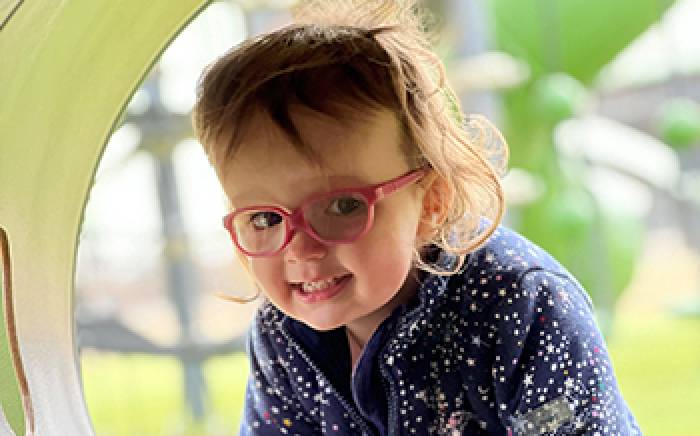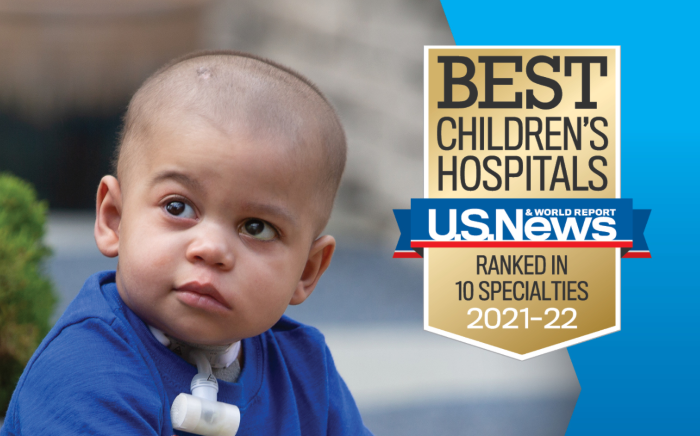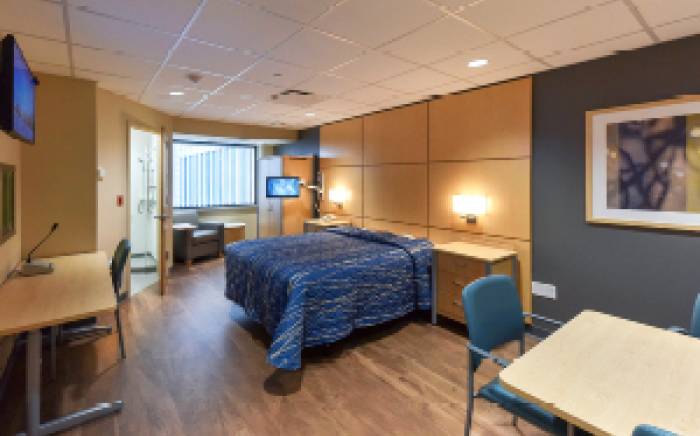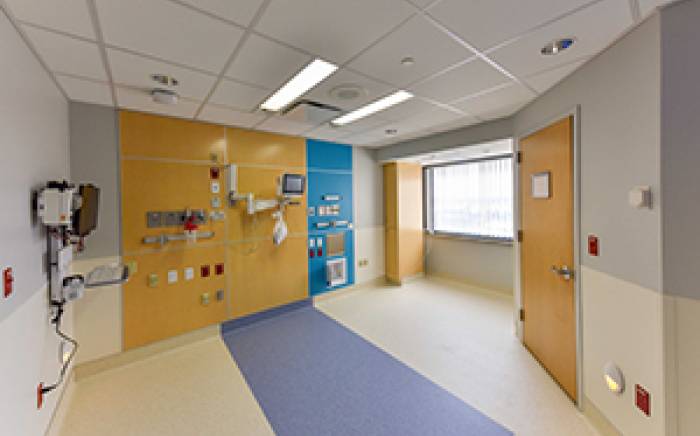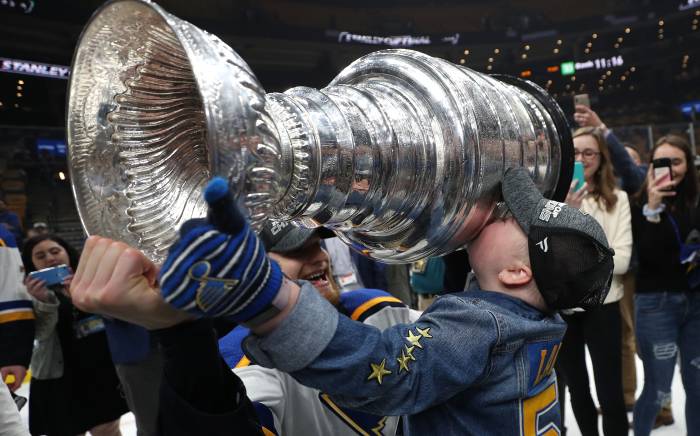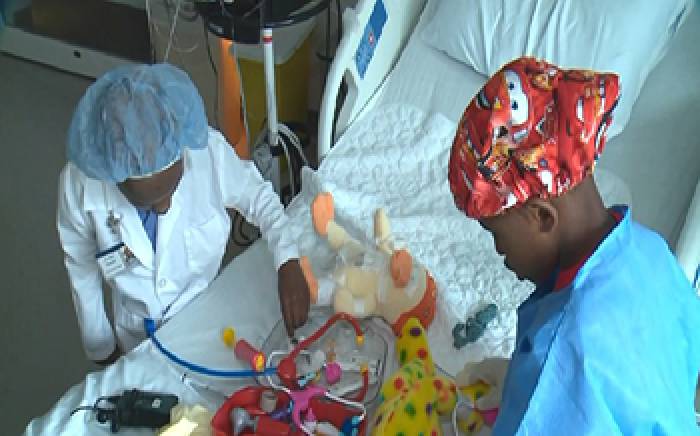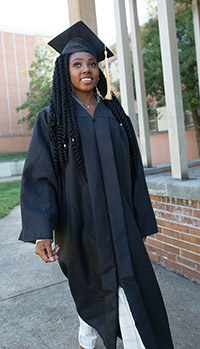 When Tomiyah Bell was 19 and a freshman at Southern Illinois University – Carbondale, something odd happened. She was giving herself a pedicure—and kept missing her toes. Then she noticed a bit of double vision when she watched television.
When Tomiyah Bell was 19 and a freshman at Southern Illinois University – Carbondale, something odd happened. She was giving herself a pedicure—and kept missing her toes. Then she noticed a bit of double vision when she watched television.
Her mom, Kewana Smith-Bell, took Tomiyah to an optometrist for a checkup. Thinking they would be there about 20 minutes, the exam lasted more than an hour. When the doctor was done, he told them there was a mass behind Tomiyah’s right eye, and she needed to see a specialist immediately. He had, in fact, already scheduled an appointment for them that same day.
The mass was a germinoma, a type of germ cell tumor most commonly found in the brain. Tomiyah’s was a suprasellar mass located by the optic nerve of her right eye. It involved the pituitary gland and hypothalamus, which control the function of several endocrine glands and a wide range of physiologic activities.
“Tomiyah’s primary doctor sent us to Siteman Cancer Center, where we saw Dr. Ralph Dacey,” says Kewana. Dr. Dacey is the Henry G. & Edith R. Schwartz Professor and Chairman of Neurological Surgery at Washington University School of Medicine. He performed the biopsy that confirmed Tomiyah’s diagnosis.
Because of the tumor’s location, surgery was out of the question. Instead, Tomiyah’s care was taken over by Washington University physicians at St. Louis Children’s Hospital since germinomas are considered pediatric tumors.
“These tumors can develop in young adults, but the majority are seen in pediatric patients,” says Washington University physician Karen Gauvain, MD, a neuro-oncology specialist with Siteman Kids at St. Louis Children’s Hospital. “In adults, these tumors often are treated with radiation only. But for younger patients, we want to reduce their radiation exposure. So the first step is chemotherapy.”
Tomiyah underwent chemotherapy for three months, each month checking into the hospital for three days.
“Those three days a month were made easier by the activities made available to patients. We tried to make sure we were there Monday through Wednesday so that we could listen to the hospital’s radio show and play bingo,” says Kewana. “And we were regular visitors to the Olson Family Garden on the eighth floor.”
The 8,000-square-foot garden is an interactive rooftop oasis designed for children and families wanting a place for privacy, solace and healing. It is home to more than 7,000 plants and flowers.
Once Tomiyah’s chemotherapy was completed, she then received three months of proton beam therapy. Proton therapy is a highly accurate form of radiation therapy used to treat tumors near vital organs like the spine, brain, heart and eye in adult and pediatric patients. Protons target tumors with greater precision because the depth of the radiation can be adjusted, thus avoiding exposing other organs and healthy tissue. The S. Lee Kling Proton Therapy Center on the Washington University medical campus is one of only 23 centers in the country to offer this advanced treatment capability.
The months of treatment paid off. Tomiyah’s tumor is gone, and the chances of it recurring are low. After attending St. Louis Community College at Forest Park during the months of her treatment—and making the Dean’s List with a 4.0 average—Tomiyah is back at SIU – Carbondale studying business. Although the sight in her right eye is diminished, it’s not stopping her from pursuing her goal of becoming makeup artist. She’s planning on developing her own YouTube channel to instruct viewers on makeup techniques. Her sight is set on a bright future ahead.





